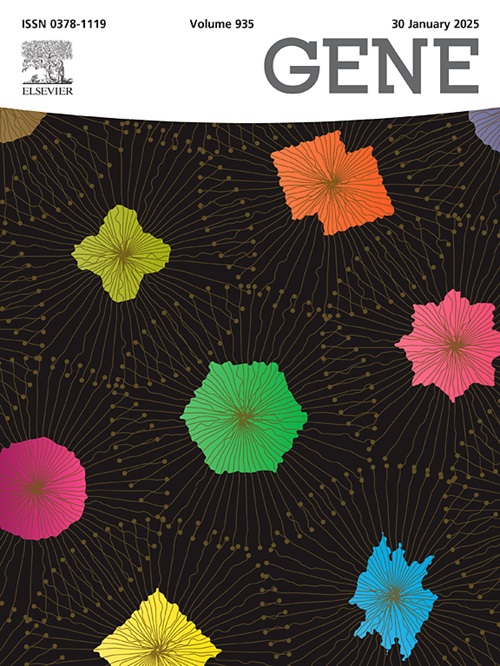Crucial role of preserving umbilical cord stumps for genetic decoding of a family with rhabdoid tumor predisposition syndrome
IF 2.6
3区 生物学
Q2 GENETICS & HEREDITY
引用次数: 0
Abstract
Background
The Rhabdoid tumor is an aggressive tumor that is commonly found in infants and children with a prevalence of about, 0.6 in every 1 million children. The SMARCB1 or SMARCA4 gene mutations can result in Rhabdoid tumor predisposition syndrome 1 and 2 respectively. In Indian customs, dried umbilical cord stumps that had fallen off were stored to treat various illnesses, including infertility.
Aim and objective
This study aims to unravel the mystery behind recurrent childhood loss in a family using umbilical cord stumps of the deceased children.
Methodology
We obtained the dried umbilical cord stumps of the deceased children, which were stored by their parents, as there was no genetic diagnosis performed on the children who passed away unexpectedly. Following DNA extraction from the parents’ and the umbilical cord stumps, whole exome sequencing analysis (WES) was performed.
Results
The WGS report showed a pathogenic germline mutation, Chr22:g.23791780; c.118C > T; (p.Arg40Ter) in the SMARCB1 gene causing Rhabdoid tumor predisposition syndrome 1, which was present in the children who passed away earlier. The mother was discovered to be a silent carrier with heterozygous mutant alleles, according to carrier screening and segregation analysis. Genetic counseling was given to the parents in light of the 50 % recurring risk in the foetus, and the continued pregnancy was determined to be normal. The diagnostic benefit of using dried umbilical cord stumps which are customarily retained by Indian parents who have had early childhood losses was demonstrated by this investigation.
保存脐带残端对横纹肌样肿瘤易感综合征家族基因解码的关键作用
横纹肌样瘤是一种侵袭性肿瘤,常见于婴儿和儿童,发病率约为每100万儿童中有0.6例。SMARCB1或SMARCA4基因突变可分别导致横纹肌样肿瘤易感综合征1和2。在印度的习俗中,已经脱落的干脐带被储存起来治疗各种疾病,包括不孕症。目的与目的本研究旨在利用已死亡儿童的脐带残端揭开一个家庭中复发性儿童丢失的神秘面纱。方法因未对意外死亡患儿进行基因诊断,故取其父母保存的已干脐带残段。从父母和脐带残端提取DNA后,进行全外显子组测序分析(WES)。结果WGS报告显示一个致病种系突变,Chr22:g.23791780;c.118C祝辞T;(p.Arg40Ter)在SMARCB1基因中引起横纹肌样肿瘤易感综合征1,这在早期死亡的儿童中存在。根据携带者筛选和分离分析,发现母亲为杂合突变等位基因的沉默携带者。鉴于胎儿有50%的复发风险,对父母进行了遗传咨询,并确定继续妊娠正常。使用干脐带残端诊断的好处,通常保留由印度父母谁有早期儿童损失证明了这项调查。
本文章由计算机程序翻译,如有差异,请以英文原文为准。
求助全文
约1分钟内获得全文
求助全文
来源期刊

Gene
生物-遗传学
CiteScore
6.10
自引率
2.90%
发文量
718
审稿时长
42 days
期刊介绍:
Gene publishes papers that focus on the regulation, expression, function and evolution of genes in all biological contexts, including all prokaryotic and eukaryotic organisms, as well as viruses.
 求助内容:
求助内容: 应助结果提醒方式:
应助结果提醒方式:


